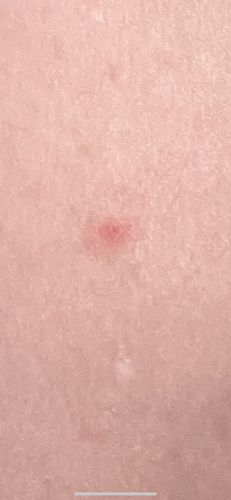Flea (bite)
Scientific Name: Siphonaptera (order)
Order & Family: Order: Siphonaptera, Family: Pulicidae (common fleas)
Size: Adult fleas are typically 1.5 mm to 3.2 mm long.

Natural Habitat
Fleas are commonly found in environments shared with mammals and birds, including pet bedding, carpets, upholstery, cracks in floors, and sheltered outdoor areas. They thrive in warm, humid conditions.
Diet & Feeding
Adult fleas are obligate hematophagous parasites, meaning they feed exclusively on the blood of their warm-blooded hosts (mammals and birds). Larval fleas feed on organic detritus, including adult flea feces, which contain dried blood.
Behavior Patterns
Fleas are wingless insects known for their impressive jumping abilities, allowing them to transfer between hosts. They are highly active and can quickly infest an environment if hosts are present. Their life cycle includes eggs, larvae, pupae, and adults, with the pupal stage being very resilient and able to remain dormant for extended periods, emerging when vibrations or carbon dioxide indicate a host is near. Bites often occur in clusters or lines.
Risks & Benefits
Potential risks include itchy, irritating bites that can lead to secondary skin infections from scratching. Fleas can transmit diseases such as murine typhus and plague (though rare in many developed areas), and they can transmit tapeworm (Dipylidium caninum) to pets and, rarely, to humans. For pets, heavy infestations can lead to anemia. There are no known direct benefits of fleas to humans, and their ecological role is primarily as parasites.
Identified on: 9/9/2025